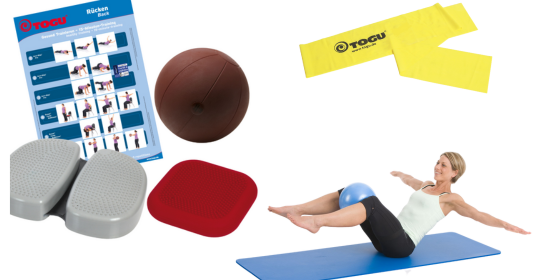When we talk about the back muscles, we are talking about the skeletal muscles in the area of the back. Two types of muscles can be distinguished here in terms of developmental history. In this article you will learn which muscles belong to the autochthonous back muscles, how they function and what importance they have for our body. We’ll also give you tips on how to strengthen the back muscles to prevent back pain and improve your posture.
What are autochthonous muscles?
The autochthonous back musculature is an important part of the skeletal musculature in the region of the back (dorsum). This includes the musculature that has formed directly on the spine and is thus primarily localized in the back region. It is therefore also called localized, primary or genuine back muscles. Unlike other muscles in the body, the autochthonous back muscles are innervated by the spinal branches of the spinal nerves.
This musculature is essential for stabilization and movement of the spine. The autochthonous back musculature consists of a medial tract and a lateral tract that extend along the spine from pelvis to head.
What is the function of the autochthonous back muscles?
The autochthonous back muscles have a crucial function in stabilizing and moving the spine. A bilateral contraction results in dorsal extension, i.e. a stretching of the body. A unilateral contraction results in lateral flexion, i.e. a sideways tilt of the body.
In cooperation with the oblique abdominal muscles, the autochthonous back muscles also enable rotation of the body. In addition, the deep neck muscles support movements in the upper cervical joint and contribute to fine tuning. Thus, the autochthonous back muscles are an important component of posture and movement control.
What other muscles play a role in stabilizing the spine?
In addition to the autochthonous back muscles, other muscles also play a role in stabilizing the spine. These include the abdominal muscles, which have an important function in supporting the spine by promoting proper posture and alignment. The oblique abdominal muscles and the lateral back muscles, such as the quadratus lumborum muscle, also contribute to stabilization.
Strong gluteal muscles also support stability and proper spinal alignment. Together, these muscles provide optimal movement control and reduce the risk of back injuries and pain.
How to strengthen the muscles of the back?
Strengthening the back muscles is important to maintain good posture and a healthy spine. Back pain and back problems are common and can be contributed to by weak back muscles. Strong back muscles support the spine during stress and contribute to better posture. Regular exercise of the back muscles can help prevent pain and injury and help you achieve better physical performance.
There are several ways to strengthen the autochthonous back muscles:
- Back exercises: There are a variety of exercises that are specifically designed to strengthen the muscles of the back. These include, for example, the forearm support, the superman and rowing exercises. A physiotherapist or a personal trainer can help here to select the right exercises and optimize the execution.
- Yoga and Pilates: These exercise methods can also help strengthen autochthonous back muscles and improve flexibility and mobility of the spine.
- General whole body workout: The back muscles can also be strengthened through regular whole-body training, which focuses on strength training. It is important to train different muscle groups to avoid an imbalance in the body.
- Posture training: An upright posture can help to activate and strengthen the autochthonous back muscles. It is recommended to pay attention to having an ergonomic posture in everyday life and to regularly interrupt a sedentary activity and take movement breaks.
It is important to start training slowly and in a controlled manner, and to consult a doctor or physical therapist if there is any pain or discomfort in the back.
Our TOGU experts advise:
To strengthen the back muscles, targeted exercises should be performed regularly. Various exercises for the autochthonous back muscles, but also for other muscle groups in the back, such as the shoulder muscles, should be integrated into the training.
It is also important to perform the exercises correctly to avoid injuries and achieve the desired effects. It is advisable to consult a qualified trainer if you are unsure. In addition, a healthy diet and sufficient exercise in everyday life can help strengthen the back muscles and maintain a healthy spine
Our expert Denise Sommer, graduate sports scientist

